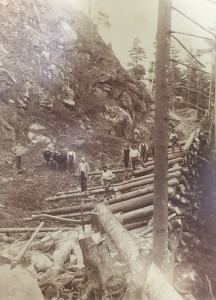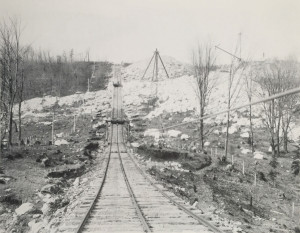East of the Otter River in southern Rutland county, accessed by the Rutland to Bennington stage road (now U.S. Route 7), early settlers began farming the western valley and along a road through the mountains to the already established, neighboring Weston village. In the mid 1700’s the village of Brooklyn developed into a milling center to process lumber being logged in the area. The small community would later in the century become a charcoal manufacturing center before eventually being largely abandoned after the turn of the 20th century, due to timber depletion and the changing landscape of energy demands.
Officially organized on March 17, 1788, the town was originally named Harwich. After several years of confusion by the Postal Service, who often confused the town with the northern town of Harwick, the name was officially changed in 1803 to Mount Tabor, to honor the first town moderator, Gideon Tabor. It was around this time that Tabor and others in the community were finding success in their farming and building their first wood-frame houses. Many of the houses in Mount Tabor are vernacular houses, evidence of the rural farming community and lumber milling center that was its beginning.
Industry
Mount Tabor grew slowly in the first half of the 19th century, averaging about 200 residents, who were primarily making their living farming. The completion of the Rutland and Bennington Railroad in 1852 brought a lot of success and wealth to the neighboring village of Danby Borough, just west of the Mount Tabor town line. The Borough had long supplied the commercial and social needs of Mount Tabor residents, but the new sense of fortune brought disputes over town boundaries and the official ownership of several buildings on the eastern fringe of Danby Borough. Though most of the property disputed was determined to be in Danby, the original Danby railroad stop remained in Mount Tabor, where a larger, more decorative building (c. 1890) was erected.
 The railroad nurtured the development of large-scale lumbering and milling operations all throughout the mountainous area, and by 1869 over nine sawmills were using the power of the Big Branch to turn timber into profits. Three of these nine mills, clustered near the confluence of the Big Branch and Otter Creek, formed the basis for the hamlet of Brooklyn, which continued to grow with the industry after 1860.
The railroad nurtured the development of large-scale lumbering and milling operations all throughout the mountainous area, and by 1869 over nine sawmills were using the power of the Big Branch to turn timber into profits. Three of these nine mills, clustered near the confluence of the Big Branch and Otter Creek, formed the basis for the hamlet of Brooklyn, which continued to grow with the industry after 1860.
Charcoal
In 1872 Silas L. Griffith of Danby, who owned land and a few milling operations, began burning his waste timber into charcoal. He quickly purchased several old lumbering camps, set over 30 charcoal kilns into operation, and reputedly became the first Vermont millionaire, supplying the charcoal needed by manufacturers of steel products. During the height of his success, between 1880 and 1900, Mount Tabor reached its peak population of 495.
The development of coked coal for use by steel manufacturers in the 1890’s led to the eventual demise of the charcoal industry, and consequently the decline of Mount Tabor’s original success. By 1920 the town only had 165 residents, and most of the lumber camps and charcoal producing camps were reclaimed by forest.
Town Line

